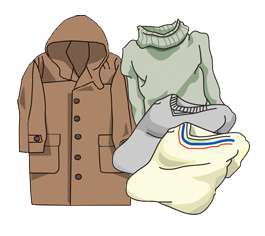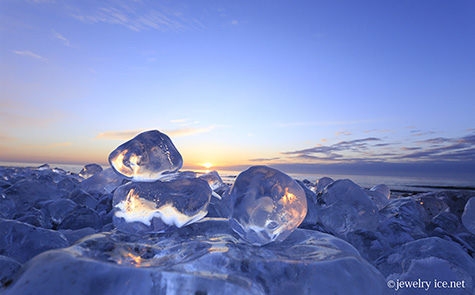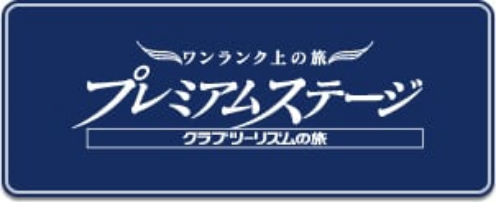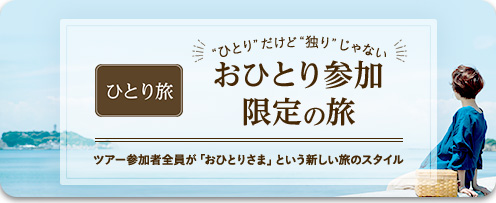

Introducing the seasonal sights of Hokkaido in winter! For trips and tours to Hokkaido, Club Tourism! We provide full support for tours with tour guides! We introduce basic information about the Hokkaido area (winter). It's easy to search for and book tours.
Introducing Hokkaido 's winter scenery you've never seen before from Kanto region
-
Winter flavors
-
Spectacular illuminations in Hakodate
-
Sapporo White Illumination
-
Wild animals to encounter in winter
-
Hoshino Resorts TOMAMU Fog and ice terrace in
-
Drift ice
-
Hoarfrost on Lake Mashu
-
Notsuke Peninsula Ice Horizon
-
A treasure of the sea to be discovered in the Tokachi Sea
-
Solo-Only Travel
-
Check the temperature and clothing for this season
Winter flavors
~ Hokkaido boasts the largest crab catch in Japan~
When it comes to Hokkaido 's signature gourmet food, it's crab.
You can enjoy not only the typical crabs caught in Japan, such as hairy crab, red king crab, and snow crab, but also unusual crabs such as Hanasaki crab. Moreover, Hokkaido is a large prefecture with fishing grounds all over the prefecture, and it boasts the highest catch of each type of crab in Japan.
~Enjoy authentic oysters in Japan's most famous oyster producing region~
Akkeshi-cho, famous for its oysters, is located Higashigawa of Hokkaido, facing the Hokkaido Taihei, roughly Tobu Nakama the cities of Kushiro City and Nemuro City.
The flesh grows plump and thick, and is characterized by a creamy, rich sweetness.
Lake Akkeshi, where freshwater rivers containing nutrients from the mountains and marshes mix with the seawater of Taihei, has a rich natural environment that nurtures oysters that are packed with flavor.
The flesh is exceptionally firm, and whether steamed or grilled, it is plump, rich, sweet and mellow! Please try it at the place where it originates.
There's more! Check out our recommended features here
Spectacular illuminations in Hakodate
~ Star Dream ~
Goryo the famous star-shaped symbol of Hakodate, is a must-see.
In winter, the moat is lit up with about 2,000 light bulbs, creating a beautiful star-shaped glow.
In addition to enjoying a stroll around Park's circular paths, we also recommend looking down on the view from the Goryo Tower Observatory.
~Hakodate Christmas Fantasy~
This is a major winter event in Hakodate that takes place every year from December 1st to 25th near the Red Brick Warehouse in the Bay Area. The illuminations of the giant tree floating in the sea are beautiful, and fireworks are set off every day at 6pm when the tree is relit.
There's more! Check out our recommended features here
Sapporo White Illumination
~The origin of Japanese illuminations, the ever-evolving art of light~
The Sapporo White Illumination, which has become established as a tradition that colors the Sapporo in early winter, began in 1981 with about 1,000 bulbs decorated in Odori Park 2 Chome Hiroba as the first illumination event in Japan. Odori Park In addition to the symbolic objects installed at the venue, the Tatsugi decorations will shine beautifully at the Sapporo Ekimaedori, Kita 3-jo Hiroba and Sapporo Station Minamiguchi venues in the north and south, and Minami1-jo Street in the southwest.
There's more! Check out our recommended features here
Wild animals to encounter in winter
~Encountering the creatures living in the sea of drift ice~
Feb. The sea of Rausu is the season of drift ice from Shiretoko to Mar.. The sea of Rausu is the world's largest wintering ground for Steller's sea eagles and white-tailed sea eagles, and you can cruise the sea on the "Drift Ice & Bird Watching Cruise". The captain, who has many years of experience as a fisherman and knows the Shiretoko sea inside out, will guide you. Photographers from all over Japan and the world gather here in Shiretoko Rausu in search of these rare birds. Please take a look at the eagle mountain, which can rarely be seen in other areas.
There's more! Check out our recommended features here
Hoshino Resorts TOMAMU Fog and ice terrace in
~A magnificent view created by nature~
At the "Frost Terrace," you can enjoy the spectacular view of the snowy mountains and appreciate the "frost" phenomenon, where moisture in the air and fog stick to the trees at temperatures between minus 22 and minus 10 degrees. The winter scenery created by the frost that fills the entire field of vision is exceptional.
Between Dec. 1st and 25th, there will also be a limited time evening "frost illumination."
There's more! Check out our recommended features here
Drift ice
~ A winter feature representative of Sea of Okhotsk ~
★How is drift ice formed?
Drift ice observation season usually runs from mid-Jan. to mid-Mar.. Drift ice is born near the mouth of the Amur River in Russia, about 1,000 km away from Hokkaido. It is blown by the wind and carried by ocean currents, gradually growing as it makes its way to the Sea of Okhotsk coast of Japan.
"Drift ice" can only be enjoyed in Hokkaido in Japan. The sight of drift ice coming from far away Russia and covering the entire ocean is truly impressive!
How to enjoy drift ice
We recommend taking Cruise to get a close-up look at the vast expanse of drift ice from the boat. Drift ice Cruise depart from Abashiri, Monbetsu, and Rausu on Shiretoko. We also recommend the "Drift Ice Walk," where you can walk or lie down on the drift ice wearing a special dry suit!
Shiretoko is a place where drift ice gathers, and the contrast between the drift ice and the setting sun seen from the top of the hill is spectacular. Why not go and see this magnificent landscape created by nature?
There's more! Check out our recommended features here
Hoarfrost on Lake Mashu
~Snow-covered art sparkling in the sunlight~
Hoarfrost is water vapor in the atmosphere that adheres to trees and freezes. Even the tips of the branches of trees that have lost their leaves in winter are dyed pure white. It is very fragile and melts when exposed to sunlight. Therefore, it is only available in the early morning. It will be gone by midday when the sun comes up.
Lake Mashu is a caldera surrounded by mountains, so the area at the bottom of the caldera is prone to accumulating cold air due to radiation cooling, resulting in extremely low temperatures. Water vapor is generated by the difference between the water temperature and the air temperature near bodies of water such as the Kushiro River and Lake Kussharo, so frost forms all over the area, including the streams throughout the caldera.
Notsuke Peninsula Ice Horizon
~A silvery white world created by Japan's largest sandy peninsula and the completely frozen sea~
★Japan's largest sandbar: Notsuke Peninsula
Notsuke Peninsula is 26 kilometers long and is the largest sand spit in Japan. It is located in the east of Hokkaido, halfway between Shiretoko and the Nemuro Peninsula. It was formed by the accumulation of sediment carried by seawater flowing along the shore, and the road is only 50 meters wide at its narrowest point! It feels like you are driving on the sea.
★The scenery changes drastically between summer and winter
The peninsula is known for its wildflowers and natural flower fields in the summer, but in the coldest months of winter, from January to Mar. you can witness a unique sight as the sea inside the peninsula freezes over and turns into an ice plain, while drift ice washes up on the shore on the ocean side. The sight of Notsuke Bay, inside the Notsuke Peninsula, freezing over and turning into a land of ice is a spectacular sight! You can experience walking through a world of ice. Post your own footprints on the pristine snowfield and trick photos using perspective to show off on social media! You may also encounter wild animals such as Ezo deer and Ezo red foxes!
There's more! Check out our recommended features here
A treasure of the sea to be discovered in the Tokachi Sea
~Jewel of the sea "Jewelry Ice"~
Jewelry ice occurs when ice that covers the Tokachi River flows into the Pacific Ocean and washes up on the shore. As it is tossed about by the waves, the edges of the ice are rounded off, turning it into transparent, crystal-like ice. The way it sparkles beautifully in the sunlight is truly a jewel of the sea! It can usually be seen from mid-Jan. to late Feb. on the sandy beach near the mouth of the Tokachi River in Otsu, Toyokoro Town.
There's more! Check out our recommended features here
Solo-Only Travel
Average winter temperatures in Hokkaido and what to wear
The information below is for reference only. Please check the temperature and other information in advance before making your preparations.
Below are the maximum and minimum temperatures.
| Tokyo | Sapporo | Asahikawa | Abashiri | |
|---|---|---|---|---|
| Apr. |
23.4/5.3 |
16.4/-1.5 |
16.9/-6.3 |
18.6/-2.8 |
| May. |
28.5/10.5 |
27.6/2.2 |
30.5/-0.4 |
32.1/-0.2 |
| Jun. |
30.2/14.7 |
29.2/9.7 |
31.3/6.5 |
25.4/4.8 |
| Jul. |
35.4/21.0 |
33.1/15.9 |
32.6/13.1 |
28.6/13.1 |
| Aug. |
38.3/20.3 |
31.7/14.9 |
33.5/12.2 |
32.4/13.4 |
| Sep. |
35.7/15.7 |
28.6/6.6 |
26.7/1.6 |
29.5/7.2 |
| Oct. |
31.3/12.0 |
24.6/3.7 |
24.1/-0.7 |
22.8/2.1 |
| Nov. |
21.5/5.9 |
16.4/-3.0 |
15.9/-6.4 |
17.3/-3.8 |
| Dec. |
17.6/0.5 |
11.0/-5.6 |
8.2/-14.5 |
11.8/-9.4 |
| Jan. |
14.4/-1.4 |
2.7/-12.2 |
0.0/-20.1 |
0.6/-17.8 |
| Feb. |
20.9/-0.5 |
7.6/-11.3 |
7.1/-21.2 |
7.9/-14.9 |
| Mar. |
25.3/3.2 |
9.0/-7.8 |
13.2/-16.9 |
11.2/-11.0 |
Winter Dec. to Mar.
We recommend wearing clothes that are easy to adjust your body temperature according to the temperature.

[Dec.]
From the end of the month, the snow will become permanent (it will remain after it has fallen and will not melt until the snow melts). You will need an overcoat, gloves, and winter shoes (or shoes with anti-slip pads).
[January-Feb.]
This is a time when the weather is prone to change. There is a lot of snow in the central Hokkaido and the heavy snow region, and the temperature is particularly low in Tokachi and Eastern Hokkaido. It is convenient to wear a jacket or coat with a hood. It is also effective to keep the extremities of your body warm by wearing a scarf, gloves, hat, etc.
[Mar.]
The temperature difference between morning and evening is large. It is a good idea to wear clothes that are easy to put on and take off to regulate your temperature. Coats are still necessary.

[Convenient to have]
Removable anti-slip
The "anti-slip band" is a belt with metal spikes that is attached to the toes and heels of regular sneakers to prevent falls. It is very convenient because it is easy to put on and take off and easy to carry around. You can use it as many times as you like when traveling to snowy regions, not just Hokkaido. Please consider using it on this occasion!
Easy online travel consultation
Customer Co-Creation Activities
Latest Tours and Information
Club Tourism Travel Brand
Overseas Travel
Club Tourism Internet Membership Information
-
A wide range of services exclusively available to members
-
Search for trips anytime, anywhere!
-
Be the first to know about the best seasonal travel deals!













































